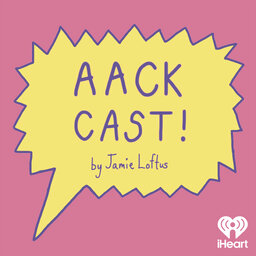In part two of Jamie's exploration into who shared the American funny pages with Cathy Guisewite, we take a look at the artists chronicling the experiences of the boomer and Gen X crowd day to day along with her -- Gary Trudeau of Doonesbury, Aaron McGruder of The Boondocks, Alison Bechdel of Dykes to Watch Out For, and Lynn Johnston of For Better or For Worse. Tell your moms!
Learn more about your ad-choices at https://www.iheartpodcastnetwork.com
 Aack Cast by Jamie Loftus
Aack Cast by Jamie Loftus


